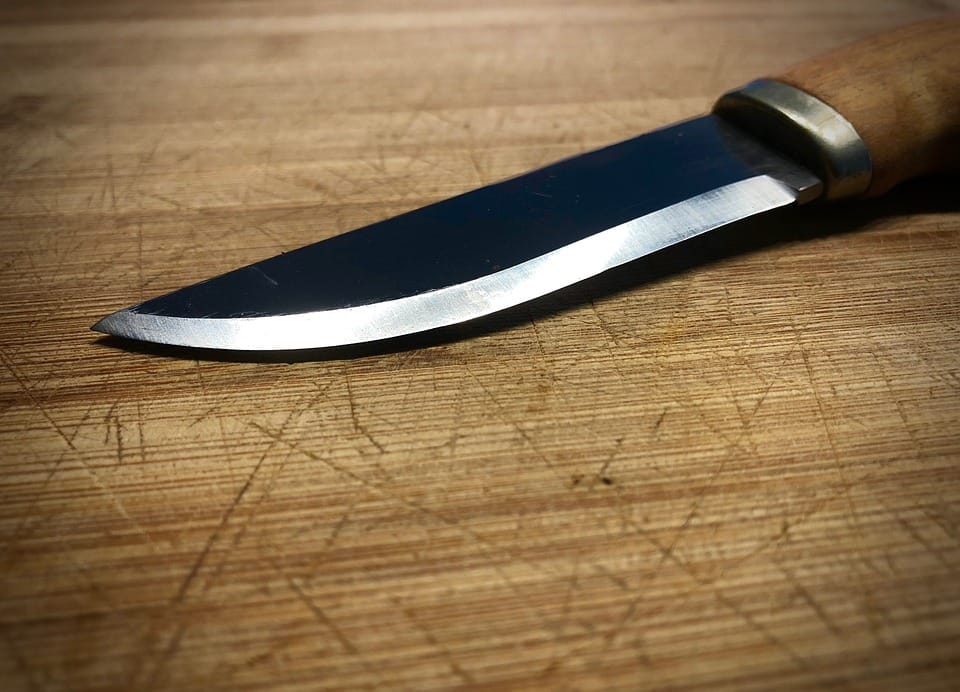A Cut Above: The Science Behind a Sharp Knife Blade
The Science of Sharpness
A sharp knife is a thing of beauty, a symbol of precision and elegance in the world of cutlery. But what makes a knife truly sharp? Is it the material it’s made of, the craftsmanship that goes into its construction, or something else entirely? The answer lies in the science behind a sharp blade.
One of the most important factors in determining a knife’s sharpness is its edge geometry. The edge geometry refers to the shape and angle of the blade’s cutting edge. A sharp knife is one that has a precise, well-defined edge that is maintained over its entire length. This is achieved through a combination of the blade’s shape, the angle at which it is sharpened, and the materials used to construct it.
The Materials of a Sharp Blade
The materials used to construct a knife can also play a significant role in its sharpness. High-carbon stainless steel, for example, is a popular choice for knives precisely because of its edges retention and flexibility, which allows for a razor-sharp edge. Tungsten carbide, on the other hand, is often used in high-end knives due to its exceptional hardness and resistance to corrosion.
The Sharpening Process
But a sharp knife is only as good as its sharpening. The sharpening process can be influenced by a variety of factors, including the type of stone or whetstone used, the angle at which it is sharpened, and the level of pressure applied. A laser-sharp knife is one that has been carefully honed and sharpened to maintain its edge over time.
The Science of Edge Retention
Edge retention refers to the ability of a knife to maintain its sharpness over time. A knife with poor edge retention will slip into dullness quickly, requiring frequent sharpening. On the other hand, a knife with excellent edge retention will remain sharp for a long time, despite heavy use.
Factors Affecting Edge Retention
Several factors can affect the edge retention of a knife, including:
- Material: As previously mentioned, the material used to construct a knife can play a significant role in its edge retention. High-carbon stainless steel, for example, is known for its excellent edge retention, while titanium can be more prone to dulling.
- Edge geometry: The shape and angle of the cutting edge can also impact edge retention. A knife with a well-defined, straight edge is more likely to retain its sharpness than one with a wavy or uneven edge.
- Maintenance: Regular sharpening, cleaning, and storage can all play a role in maintaining the edge retention of a knife.
The Science of Cutting
But a knife is only as good as its cutting ability. The science of cutting is a complex field, involving a range of physical, chemical, and biological interactions. At its core, cutting is a process that involves the application of force and pressure to a substance in order to change its shape or form.
The Biology of Cutting
But cutting is not just about physical action; it’s also deeply rooted in biology. The science of cutting is closely tied to the biology of cutting, which involves the use of enzymes and other biological materials to break down and manipulate materials.
Frequently Asked Questions
- What makes a knife truly sharp?
A knife is truly sharp when it has a precise, well-defined edge, a function of its material, edge geometry, and sharpening process. - How do I maintain the edge retention of my knife?
Regular sharpening, cleaning, and storage can all help to maintain the edge retention of your knife. - How do I care for my knife?
Regular cleaning and maintenance are essential for keeping your knife in top condition. Avoid using harsh chemicals or abrasive materials, which can damage the blade. - What is the best material for a knife?
The best material for a knife is dependent on the intended use and personal preference. High-carbon stainless steel and titanium are popular choices for their edge retention and flexibility.
Conclusion
A sharp knife is a thing of beauty, a symbol of precision and elegance in the world of cutlery. But what makes a knife truly sharp? The answer lies in the science behind a sharp blade, a complex interplay of material, edge geometry, and sharpening process. By understanding the science behind cutting, we can appreciate the beauty and utility of a well-crafted knife, and use it to its full potential. Whether for culinary, outdoor, or everyday use, a sharp knife is a tool that can be a cut above the rest.
FAQs:
What makes a knife truly sharp?
A knife is truly sharp when it has a precise, well-defined edge, a function of its material, edge geometry, and sharpening process.How do I maintain the edge retention of my knife?
Regular sharpening, cleaning, and storage can all help to maintain the edge retention of your knife.How do I care for my knife?
Regular cleaning and maintenance are essential for keeping your knife in top condition. Avoid using harsh chemicals or abrasive materials, which can damage the blade.What is the best material for a knife?
The best material for a knife is dependent on the intended use and personal preference. High-carbon stainless steel and titanium are popular choices for their edge retention and flexibility.What is the science behind cutting?
The science of cutting is a complex field, involving a range of physical, chemical, and biological interactions. At its core, cutting is a process that involves the application of force and pressure to a substance in order to change its shape or form.- How can I improve my cutting ability?
Practice, practice, practice! Cutting is a skill that requires patience, skill, and dedication. With regular use and proper care, your knife will become an extension of your hand, allowing you to cut with precision and ease.
